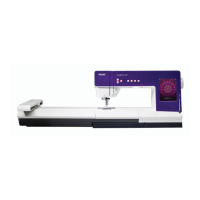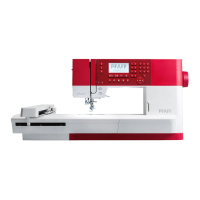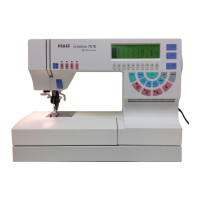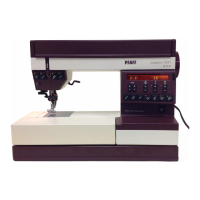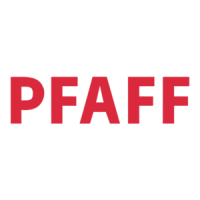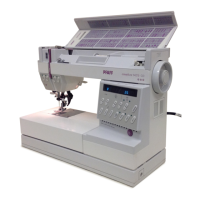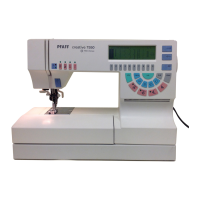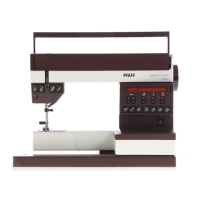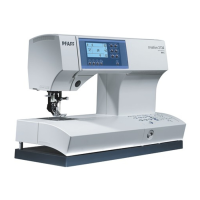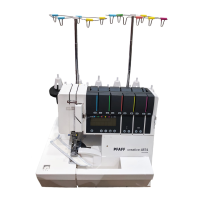2:10
F
G
H
A B C D E
Preparations
Needles
The sewing machine needle plays an important
role in successful sewing. Use only quality needles.
We recommend needles of system 130/705H.
The needle package included with your machine
contains needles of the most frequently used sizes.
Universal needle (A)
Universal needles have a slightly rounded point
and come in a variety of sizes. For general sewing in
a variety of fabric types and weights.
Stretch needle (B)
Stretch needles have a special scarf to eliminate
skipped stitches when there is a Á ex in the fabric.
For knits, swimwear, Á eece, synthetic suedes and
leathers.
Embroidery needle (C)
Embroidery needles have a special scarf, a slightly
rounded point and a slightly larger eye to avoid
damage to thread and materials. Use with metallic
and other specailty threads for embroidery and
decorative sewing
Denim needle (D)
Denim needles have a sharp point to penetrate
tightly woven fabrics without deÁ ecting the needle.
For canvas, denim, microÀ bers.
Wing needles (E)
The Wing needle has wide wings on the side of
the needle to poke holes in the fabric when sewing
entredeux and other hemstitches on natural À ber
fabrics.
Changing the needle
1. Use the hole in the multi-purpose tool to hold
the needle.
2. Loosen the needle screw.
3. Remove the needle.
4. Insert the new needle, using the multi-purpose
tool. Push the new needle upwards with the Á at
side away from you until it will go no further.
5. Tighten the needle screw as tight as it will go.
Note: Change the needle often. Always use a straight
needle with a sharp point (F).
A damaged needle (G) can cause skipped stitches,
breakage or snapping of thread. A damaged needle can
also damage the needle plate.
Do not use asymmetrical twin needles (H), since it may
damage your sewing machine.
